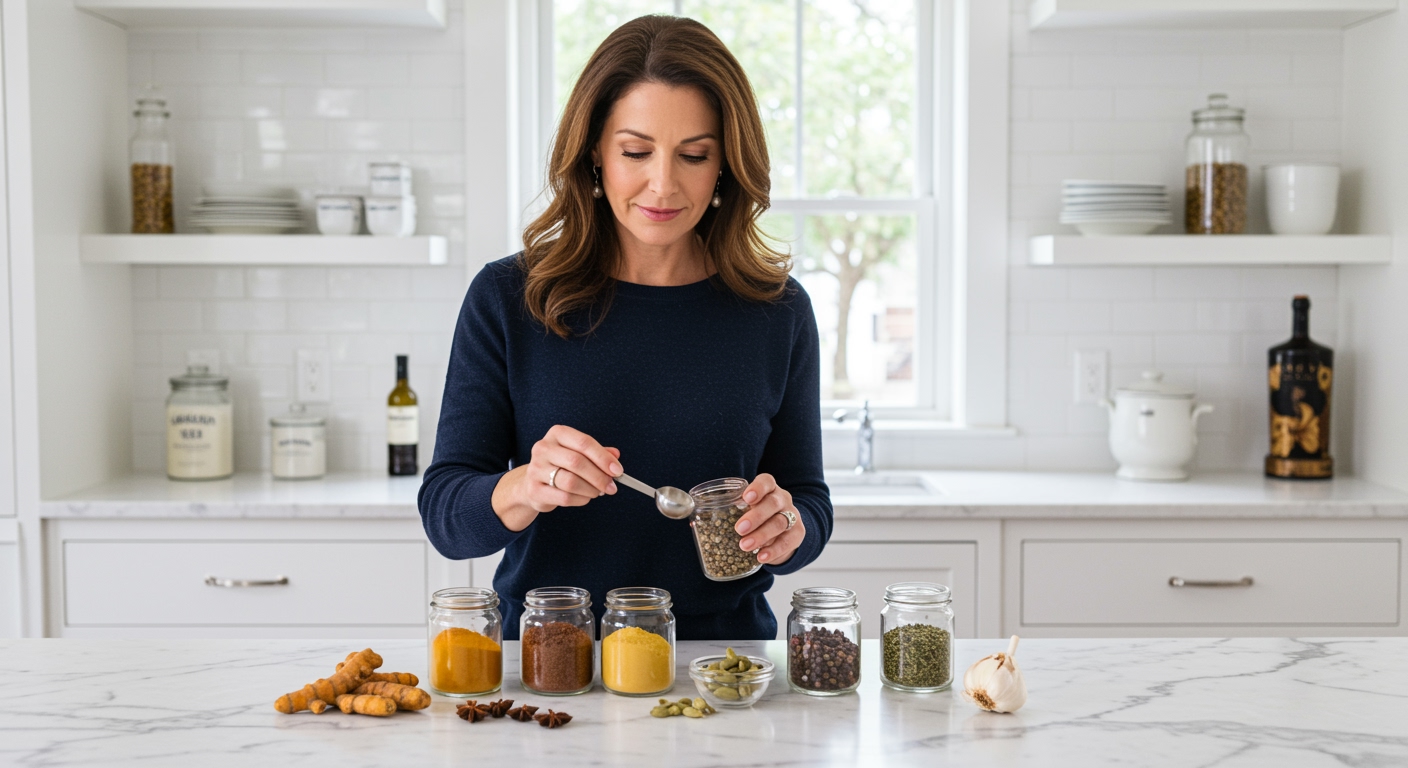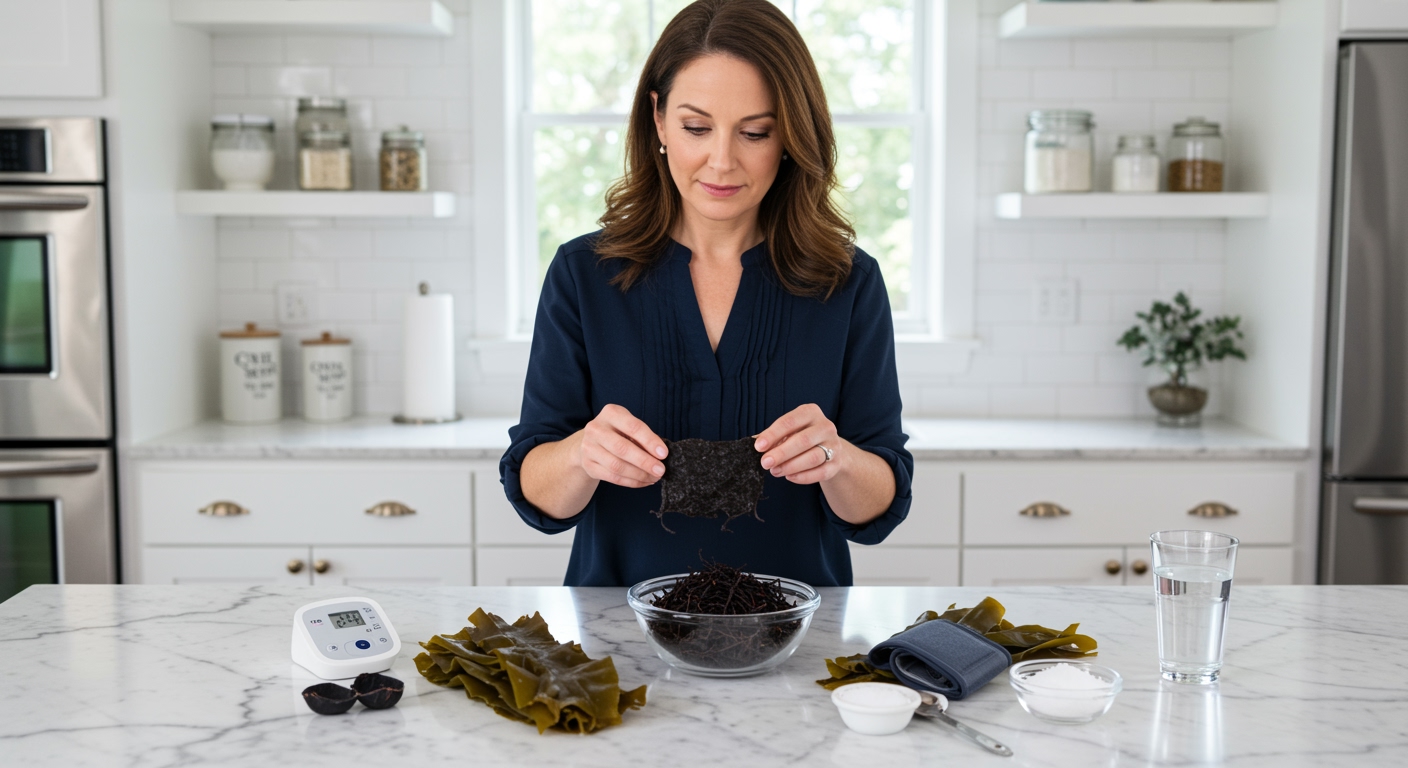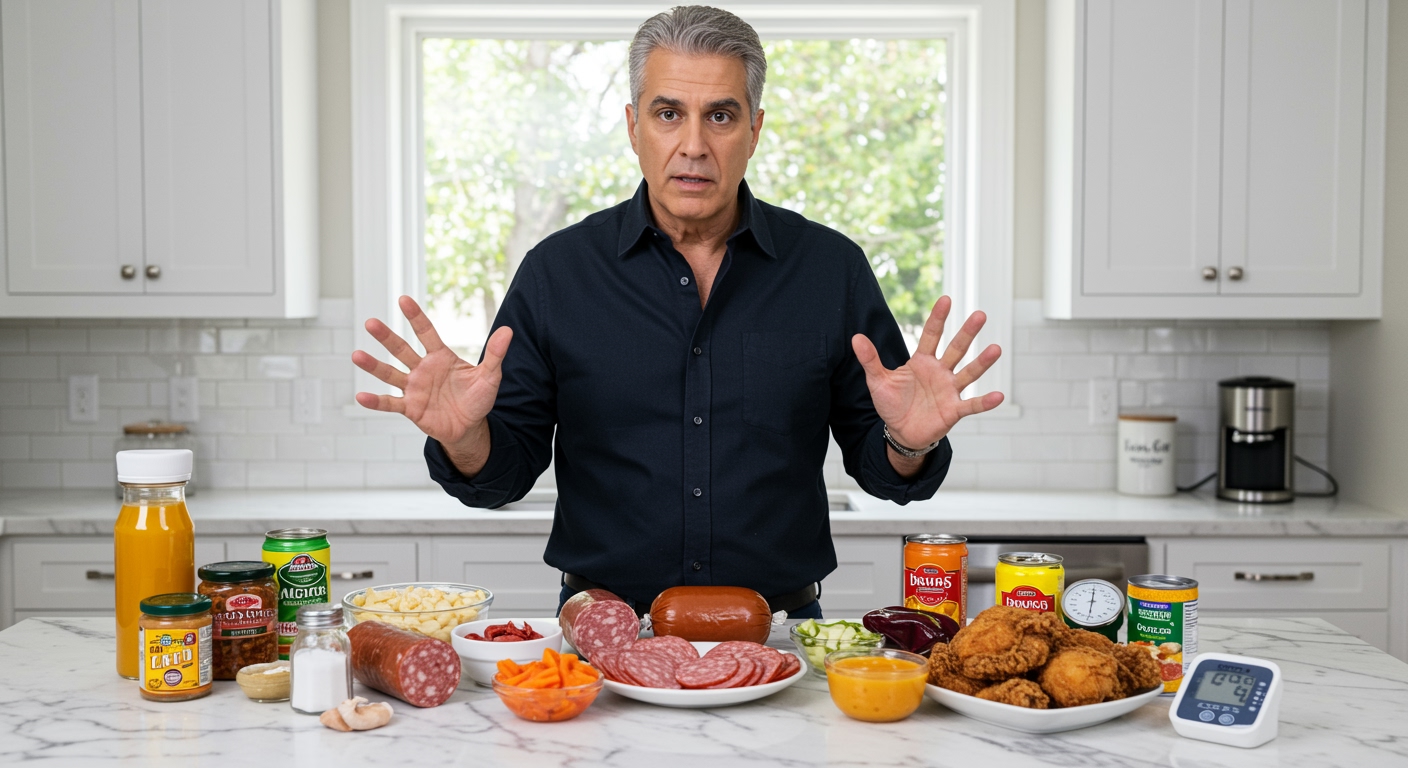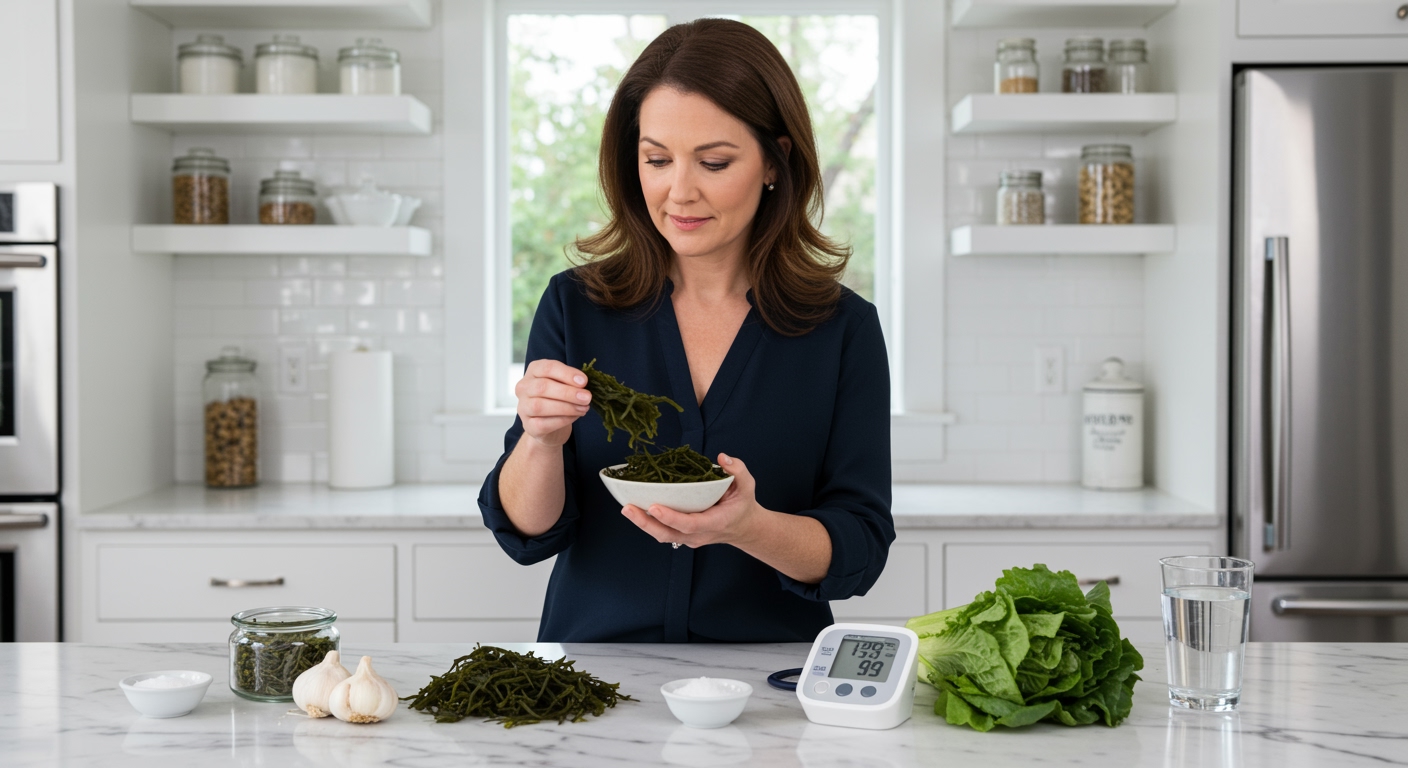✪ Key Takeaway: Yes, specific spices like garlic, turmeric, and cinnamon can significantly lower blood pressure through proven mechanisms.
Introduction
Your medicine cabinet might be missing the most powerful blood pressure fighters sitting right in your kitchen.
You probably wonder if those colorful jars and containers on your spice rack can actually make a difference in your blood pressure readings.
Hi, I am Abdur, your nutrition coach and today I am going to explain exactly how spices can become your natural allies in managing high blood pressure.
Which Spices Actually Lower Blood Pressure?
Garlic stands as the champion of blood pressure-lowering spices with over 20 clinical studies backing its effectiveness.
Fresh garlic contains allicin, a sulfur compound that relaxes blood vessels and improves circulation throughout your body.
Research shows that consuming just one clove of fresh garlic daily can reduce systolic blood pressure by 8-10 mmHg within 12 weeks.
Turmeric delivers curcumin, an active compound that reduces inflammation in your arteries and prevents plaque buildup.
Studies demonstrate that taking 500mg of curcumin daily can lower both systolic and diastolic blood pressure significantly.
Cinnamon works by improving insulin sensitivity and reducing arterial stiffness, which directly impacts blood pressure control.
Just half a teaspoon of Ceylon cinnamon daily has shown measurable blood pressure improvements in multiple clinical trials.
✪ Pro Tip: Use fresh garlic instead of garlic powder for maximum allicin content and blood pressure benefits.
How Do Spices Actually Work Inside Your Body?
Spices work through multiple biological pathways to reduce blood pressure, not just one simple mechanism.
Many spices contain nitrates that convert to nitric oxide in your body, causing blood vessels to relax and widen.
This vasodilation effect reduces the pressure needed for your heart to pump blood through your circulatory system.
Anti-inflammatory compounds in spices like ginger and cayenne pepper reduce arterial inflammation that contributes to high blood pressure.
Some spices also act as natural ACE inhibitors, blocking enzymes that constrict blood vessels and increase blood pressure.
The antioxidants in colorful spices protect your blood vessels from oxidative damage that leads to stiffening and narrowing over time.
✪ Fact: Black pepper increases the absorption of curcumin from turmeric by up to 2000 percent.
What About Salt and Sodium in Spice Blends?
Many commercial spice blends contain hidden sodium that can actually raise your blood pressure instead of lowering it.
Always check the ingredient list on spice mixtures because manufacturers often add salt as the first or second ingredient.
Pure spices contain virtually no sodium and provide all the blood pressure benefits without any negative effects.
Seasoning salt, garlic salt, and onion salt are the worst offenders because they contain more sodium chloride than actual spice.
Instead of these processed blends, combine individual spices yourself to control exactly what goes into your food.
Fresh herbs like basil, oregano, and thyme provide potassium that helps balance sodium levels and supports healthy blood pressure.
✪ Note: A single teaspoon of seasoning salt contains about 1,200mg of sodium, nearly half your daily limit.
How Much Should You Use Daily?
The effective dose varies significantly between different spices, so you cannot apply the same amount to everything.
For garlic, one to two fresh cloves daily provides enough allicin to see blood pressure improvements within weeks.
Turmeric requires about one teaspoon of powder daily, but you must combine it with black pepper for proper absorption.
Cinnamon works best at half a teaspoon daily, but make sure you use Ceylon cinnamon instead of the common Cassia variety.
Cayenne pepper needs only a pinch because capsaicin is extremely potent and too much can cause digestive upset.
Start with smaller amounts and gradually increase to let your taste buds and digestive system adapt to stronger flavors.
Consistency matters more than quantity, so using moderate amounts every day beats large doses taken sporadically.
✪ Pro Tip: Add spices at the end of cooking to preserve their active compounds and maximize health benefits.
Can Spices Replace Blood Pressure Medication?
Spices should complement your current treatment plan, not replace prescribed medications without medical supervision.
While research shows impressive results, spices work more slowly than pharmaceutical drugs and may not be sufficient for severe hypertension.
Many people successfully reduce their medication dosage by incorporating therapeutic spices into their daily routine over time.
Always work with your healthcare provider to monitor your blood pressure when adding therapeutic amounts of spices to your diet.
Some spices can interact with blood pressure medications, potentially causing your pressure to drop too low or affecting drug absorption.
The best approach combines proven spices with other lifestyle changes like exercise, stress management, and proper sleep habits.
✪ Note: Never stop taking prescribed blood pressure medication without consulting your doctor first.
The Bottom Line
Spices offer a scientifically proven, natural way to support healthy blood pressure levels when used consistently and correctly.
Your kitchen holds more healing power than most people realize, but only if you know how to use it wisely.
I would love to hear about your experience with using spices for blood pressure management, so please share your questions or results in the comments below.
References
At NutritionCrown, we use quality and credible sources to ensure our content is accurate and trustworthy. Below are the sources referenced in creating this article:
- Medical News Today: Can herbs and spices lower blood pressure?
- Penn State University: Adding herbs and spices to meals may help lower blood pressure
- PubMed: Effects of herbs and spices on cardiovascular diseases
- PMC: Spices and cardiovascular health





